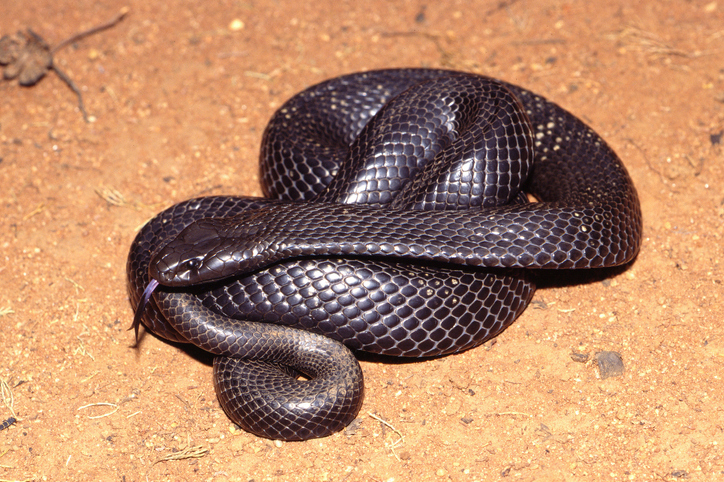Introduction
The tiger snake is among Australia's many notorious reptiles, been afraid for its potent venom and aggressive character. This remarkable animal plays a crucial duty in the ecological community, yet it frequently faces misunderstandings that lead to unnecessary anxiety. In this detailed write-up, we will delve into the globe White crowned snake of the tiger serpent, discovering its habitat, venom features, and crucial emergency treatment methods in instance of a snake bite.
Understanding the Tiger Serpent: Environment, Venom, and Emergency Treatment Essentials
Tiger snakes are mainly located along the southern coastline of Australia, consisting of Tasmania. They prosper in numerous settings such as wetlands, seaside regions, and also metropolitan locations. Their versatility makes them successful killers; nevertheless, their distance to human habitats frequently causes encounters that can lead to bites.
This article intends to demystify tiger serpents by reviewing their habitat choices, analyzing their venom structure and results on people, and offering essential first aid details for bites.
1. Tiger Snake Environment: Where Do They Live?
1.1 Overview of Tiger Serpent Distribution
Tiger serpents (Notechis scutatus) are mainly found in southern Australia and Tasmania. They occupy various environments varying from coastal marshes to freshwater lakes.
- Coastal Regions: Tiger serpents are typically seen near coastlines where they search for fish and amphibians. Wetlands: These areas give adequate concealing areas and plentiful prey. Urban Locations: As cities broaden right into natural environments, tiger snakes might be seen venturing into rural yards or parks.
1.2 Preferred Habitats of Tiger Snakes
Tiger snakes choose damp atmospheres where water sources are easily offered. Their habitats commonly consist of:
- Marshes: The thick plant life permits them to ambush prey effectively. Swamps: These areas use shelter from killers while supplying a rich searching ground. Riversides: Water bodies bring in numerous pets which act as food sources for these snakes.
1.3 Environmental Variables Affecting Habitat Choice
Several variables influence where tiger snakes pick to stay:

- Temperature: Being ectothermic (cold-blooded), they require warm settings for optimal task levels. Prey Accessibility: High populaces of frogs and tiny mammals draw in these snakes. Shelter: Thick plant life offers not just as camouflage yet likewise as protection against prospective threats.
2. Are Tiger Snakes Venomous? Recognizing Their Venom
2.1 Make-up of Tiger Snake Venom
Yes! Tiger serpents are certainly venomous creatures. Their venom is a complicated mix containing neurotoxins that can trigger paralysis and coagulopathies affecting blood clot mechanisms.
Key Components of Venom:
- Neurotoxins: Affect nerve feature leading to paralysis. Hemotoxins: Damage capillary causing interior bleeding.
Understanding these components assists us appreciate the potency of a tiger serpent bite.
2.2 Effects of a Tiger Snake Attack on Humans
A bite from a tiger serpent can lead to serious symptoms:
- Local Signs: Pain, swelling, and staining at the bite site. Systemic Signs: Nausea, vomiting, trouble taking a breath due to paralysis or restriction of airways.
Severity Levels
Minor Bite: Localized discomfort without systemic symptoms. Moderate Bite: Systemic symptoms but workable with medical care. Severe Bite: Serious; requires prompt medical intervention.3. Identifying Different Kinds Of Tiger Snakes
3.1 Eastern vs Tasmanian Tiger Snakes
There are two primary groups based on geographic distribution:
Eastern Tiger Snake (Notechis scutatus)
Found along eastern coastlines as much as Queensland.
Tasmanian Tiger Snake (Notechis scutatus)
Adapted particularly to Tasmania's distinct atmosphere with slightly varying coloration patterns.
3.2 Color Variations in Environment Preferences
Tiger serpents display significant shade variants depending on their environment:

- Coastal populaces frequently show red stripes or spots for better camouflage versus sandy shores.
4. Actions Patterns of Tiger Snakes
4.1 Aggressiveness Level
Tiger snakes are understood for their hostile actions when endangered or cornered which can cause defensive strikes if provoked.
4.2 Searching Techniques
They possess impressive dexterity allowing them to strike promptly at victim such as frogs or little rats primarily during twilight hours when they're most energetic-- making them nocturnal hunters!
5. Emergency Treatment for Snake Bites: Crucial Actions You Must Know
When it pertains to dealing with serpent bites, expertise is vital!
5.1 Immediate Actions After a Bite
If bitten by a tiger snake:
Stay calm! Panic raises heart rate which spreads poison much faster via your bloodstream.
Apply stress around the injury using tidy towels-- stay clear of reducing or sucking out venom!
Remove limited clothing/jewelry near the bite site; swelling may take place rapidly.
Immobilize the influenced arm or leg using splints ideally-- this restricts motion helping decrease venom spread!
5.2 Obtaining Clinical Help
Seek emergency situation clinical assistance promptly! Time is vital when handling prospective envenomation from tiger serpents!
5.3 First Aid Package Fundamentals for Snake Bites
Having a fully equipped first aid kit can make all the distinction throughout emergency situations:
|Item|Summary|| ------|-------------|| Pressure Bandage|Helps immobilize wound|| Sterilized Gauze|For dressing injuries|| Emergency Situation Call Info|Quick accessibility numbers|| Antivenom Information|Understanding about regional antivenoms|
6 Frequently asked questions About Tiger Snakes
Q1: Are all tiger snakes dangerous?
A: While all have poisonous capabilities impacting human beings significantly-- most favor evasion unless threatened!
Q2: Exactly how quickly does tiger serpent poison impact humans?
A: Signs and symptoms might materialize within mins relying on Snake Identification location & & amount injected during envenomation events!

Q3: Can you survive a tiger snake bite without treatment?
A: Without treatment bites can be fatal because of rapid progression; instant healthcare is crucial!
Q4: What ought to I do if I run into one?
A: Maintain range & & pull back slowly; deadliest snake in australia prevent sudden motions that may provoke aggression!
Q5: How common are attacks from tiger snakes?
A: Although encounters happen regularly-- real attacks remain fairly unusual due mostly due precautionary measures taken by citizens living within affected ranges.
Q6: Is there an antidote available?
A: Yes! Antivenoms details for Australian types exist-- medical centers lug these drugs ready when needed quickly post-bite incidents!
7 Conclusion
Understanding the details surrounding "Recognizing the Tiger Snake: Environment, Poison, and First Aid Fundamentals" is vital not just for individual safety however likewise promoting coexistence with these exceptional creatures occupying Australia's landscape! By learning more concerning their actions & & reliable reaction strategies relating to possible experiences-- we equip ourselves much better against unnecessary concerns while appreciating nature's diversity completely! So let's welcome education rather are afraid-- it leads towards harmony between mankind wild animals alike!